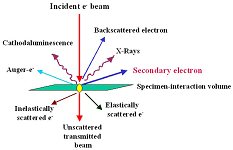
Asia Pacific Academy of Science Pte. Ltd. (APACSCI) specializes in international journal publishing. APACSCI adopts the open access publishing model and provides an important communication bridge for academic groups whose interest fields include engineering, technology, medicine, computer, mathematics, agriculture and forestry, and environment.

Fluorescence-based detection of anthrax biomarkers using copper-doped carbon nanodots
Vol 4, Issue 1, 2023
Download PDF
Abstract
In this study, water-soluble copper-doped carbon nanodots (Cu-CDs) with high fluorescence quantum yield were synthesized using a one-step hydrothermal process with citric acid and ethylenediamine as precursors and copper sulfate as the dopant. A novel fluorescence-based method for detecting anthrax biomarkers was developed, leveraging the strong chelation of 2,6-pyridinedicarboxylic acid (DPA) with the carbon nanodots. Under optimal conditions, the fluorescence quenching rate of Cu-CDs with DPA exhibited excellent linearity in the concentration ranges of 5–100 nmol/L (r² = 0.9941) and 150–400 nmol/L (r² = 0.9976), with a detection limit of 2.3 nmol/L. The method's low cost, high specificity, sensitivity, and simplicity suggest promising potential for anthrax biomarker detection.
Keywords
References
- Chen L, Fang Z. Modifying luminescent metal-organic frameworks with rhodamine dye: Aiming at the optical sensing of anthrax biomarker dipicolinic acid. Inorganica Chimica Acta. 2018; 477: 51-58. doi: 10.1016/j.ica.2018.02.032
- Gao N, Zhang Y, Huang P, et al. Perturbing Tandem Energy Transfer in Luminescent Heterobinuclear Lanthanide Coordination Polymer Nanoparticles Enables Real-Time Monitoring of Release of the Anthrax Biomarker from Bacterial Spores. Analytical Chemistry. 2018; 90(11): 7004-7011. doi: 10.1021/acs.analchem.8b01365
- Shi K, Yang Z, Dong L, et al. Dual channel detection for anthrax biomarker dipicolinic acid: The combination of an emission turn on probe and luminescent metal-organic frameworks. Sensors and Actuators B: Chemical. 2018; 266: 263-269. doi: 10.1016/j.snb.2018.03.128
- Yilmaz MD, Oktem HA. Eriochrome Black T–Eu3+ Complex as a Ratiometric Colorimetric and Fluorescent Probe for the Detection of Dipicolinic Acid, a Biomarker of Bacterial Spores. Analytical Chemistry. 2018; 90(6): 4221-4225. doi: 10.1021/acs.analchem.8b00576
- Li Y, Li X, hang D, et al. Hydroxyapatite nanoparticle based fluorometric turn-on determination of dipicolinic acid, a biomarker of bacterial spores. Microchimica Acta. 2018; 185(9). doi: 10.1007/s00604-018-2978-0
- Rong M, Liang Y, Zhao D, et al. A ratiometric fluorescence visual test paper for an anthrax biomarker based on functionalized manganese-doped carbon dots. Sensors and Actuators B: Chemical. 2018; 265: 498-505. doi: 10.1016/j.snb.2018.03.094
- hang QX, Xue SF, Chen ZH, et al. Dual lanthanide-doped complexes: the development of a time-resolved ratiometric fluorescent probe for anthrax biomarker and a paper-based visual sensor. Biosensors and Bioelectronics. 2017; 94: 388-393. doi: 10.1016/j.bios.2017.03.027
- Donmez M, Oktem HA, Yilmaz MD. Ratiometric fluorescence detection of an anthrax biomarker with Eu3+- chelated chitosan biopolymers. Carbohydrate Polymers. 2018; 180: 226-230. doi: 10.1016/j.carbpol.2017.10.039
- Li T, Tang JL, Fang F, et al. Carbon quantum dots: synthesis, properties and applications. J. Funct. Mater. 2015; 9(36): 9012-9025.
- Zhang XF, Lu JB, hang XM. Preparation, Fluorescence Properties and Cell Imaging Application of Thermo- sensitive Carbon Quantum Dots. J. Instrum. Anal. 2018; 37(2): 198–203.
- Hou X, Hu Y, hang P, et al. Modified facile synthesis for quantitatively fluorescent carbon dots. Carbon. 2017; 122: 389-394. doi: 10.1016/j.carbon.2017.06.093
- hang D, Zhang H, Guo J, et al. Biomimetic Gradient Polymers with Enhanced Damping Capacities. Macromolecular Rapid Communications. 2016; 37(7): 655-661. doi: 10.1002/marc.201500637
- Zhu S, Meng Q, hang L, et al. Highly Photoluminescent Carbon Dots for Multicolor Patterning, Sensors, and Bioimaging. Angewandte Chemie International Edition. 2013; 52(14): 3953-3957. doi: 10.1002/anie.201300519
- Zhan XF, Tang JS, hu J, Cao ZK. Determination of Copper Ions in hater Samples by Silicon Doped Carbon Quantum Dots. J. Instrum. Anal. 2016; 35(11): 1461-1465.
- Peng Z, Han X, Li S, et al. Carbon dots: Biomacromolecule interaction, bioimaging and nanomedicine. Coordination Chemistry Reviews. 2017; 343: 256-277. doi: 10.1016/j.ccr.2017.06.001
- Bera K, Sau A, Mondal P, et al. Metamorphosis of Ruthenium-Doped Carbon Dots: In Search of the Origin of Photoluminescence and Beyond. Chemistry of Materials. 2016; 28(20): 7404-7413. doi: 10.1021/acs.chemmater.6b03008
- Lin L, Luo Y, Tsai P, et al. Metal ions doped carbon quantum dots: Synthesis, physicochemical properties, and their applications. TrAC Trends in Analytical Chemistry. 2018; 103: 87-101. doi: 10.1016/j.trac.2018.03.015
- Devi P, Thakur A, Chopra S, et al. Ultrasensitive and Selective Sensing of Selenium Using Nitrogen-Rich Ligand Interfaced Carbon Quantum Dots. ACS Applied Materials & Interfaces. 2017; 9(15): 13448-13456. doi: 10.1021/acsami.7b00991
- Li P, Ang AN, Feng H, et al. Rapid detection of an anthrax biomarker based on the recovered fluorescence of carbon dot–Cu(ii) systems. Journal of Materials Chemistry C. 2017; 5(28): 6962-6972. doi: 10.1039/c7tc01058c
Supporting Agencies
Copyright (c) 2023 Peng Hua, Yu Huang, Yang Zhou, Fanyi He, Qionghui Yang, Weimei Zhu

This work is licensed under a Creative Commons Attribution 4.0 International License.

This site is licensed under a Creative Commons Attribution 4.0 International License (CC BY 4.0).
1.jpg)
Prof. Sivanesan Subramanian
Anna University, India





.jpg)
